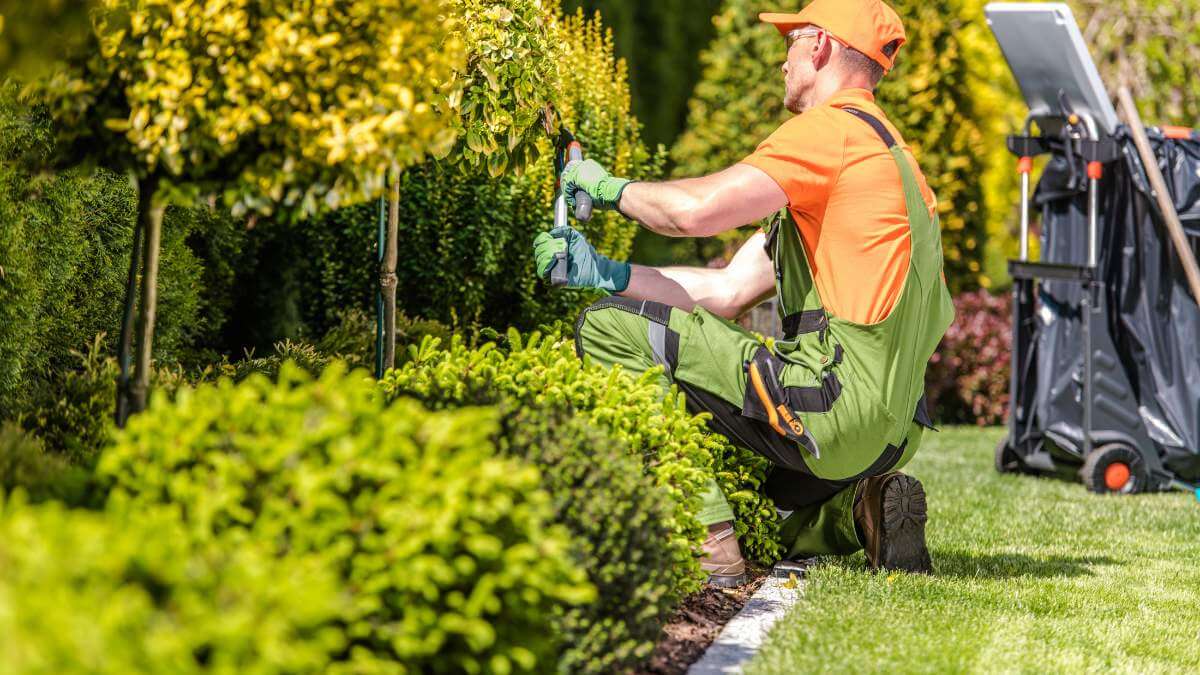Last Updated on October 18, 2023 by Kravelv Spiegel
Landscaping projects undoubtedly transform your outdoor space into a picturesque haven. However, ensuring that your yard remains a vibrant and healthy oasis requires diligent post-landscaping cleanup. In this guide, we’ll walk you through a comprehensive checklist, covering everything from safety precautions to soil cleanup and rubbish collection. So, let’s roll up our sleeves and get started!
Safety First, Always
Before you dive into the cleanup process, it’s crucial to prioritize safety. Equip yourself with the right gear: sturdy gloves to protect your hands and a mask to shield your lungs from dust and allergens. Safety glasses can also be a smart addition, especially if you’re dealing with branches or thorny plants.
Gathering Essential Tools and Materials
Arming yourself with the right tools is half the battle won. Rakes, shovels, pruning shears, and sturdy trash bags are your best friends during this cleanup venture. Proper storage is equally important to keep your tools in top-notch condition for future use. A shed or a designated storage area will safeguard your tools from the elements, ensuring they stand the test of time.
Removing Debris and Dead Plants
Start your cleanup journey by removing all debris, including dead leaves, branches, and plants. Pay special attention to the soil. Carefully clear it of debris and dead roots, laying the foundation for healthy new plantings. Proper disposal methods, such as composting organic material and recycling, are environmentally friendly choices that also contribute to the ecosystem.
Pruning and Trimming
Pruning and trimming are essential tasks that promote the overall health of your landscaping. Trim bushes and hedges to encourage new growth and shape trees for aesthetic appeal. Regular pruning ensures sunlight and air circulation reach all parts of the plants, preventing diseases and promoting vitality.
Irrigation and Drainage Check
A functional irrigation system is vital for maintaining your landscaping’s lush greenery. Check for leaks and damages, repairing them promptly to conserve water and your hard-earned money. Equally important is clearing drainage pathways to prevent waterlogging and erosion, preserving the integrity of your yard.
Soil Cleanup and Mulch Maintenance
A healthy soil is the lifeblood of any garden. Test the soil for quality and pH levels, adjusting them if necessary to create an ideal environment for your plants. Aeration is a simple yet effective technique to improve soil structure, ensuring optimal root growth and nutrient absorption. Don’t forget to spread a fresh layer of mulch evenly across your yard. Mulch acts as a natural insulator, retaining moisture, suppressing weeds, and enhancing the overall aesthetics of your landscape.
Rubbish Collection and Disposal
Proper rubbish removal and collection should always be done. It’s not only a responsibility but also a contribution to the environment. Familiarize yourself with local regulations and guidelines for green waste disposal. Consider composting organic waste; it’s an eco-friendly practice that enriches the soil and reduces landfill pressure. Taking these steps lets you actively participate in reducing your ecological footprint.
Final Touches and Inspection
With the bulk of the cleanup done, it’s time for the finishing touches. Decorative stones, garden ornaments, or even a stylish bench can elevate the aesthetic appeal of your yard. But before you sit back and admire your hard work, conduct a thorough inspection. Scan the entire area for any missed spots or potential issues. Address them promptly to ensure your landscaping project stays impeccable.
Conclusion
Post-landscaping cleanup might seem like a daunting task, but with the right approach and tools, it becomes a manageable and rewarding endeavour. Follow this comprehensive guide and you’re not only preserving the beauty of your yard but also contributing to a healthier environment. So, put on your gloves, grab your tools, and let’s keep our outdoor spaces green, clean, and beautiful for generations to come. Happy gardening!

